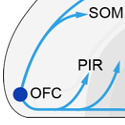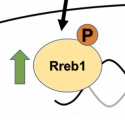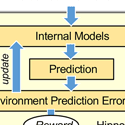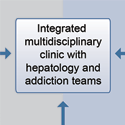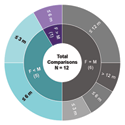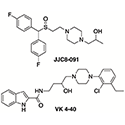Reviews To Read – April 2024. Published in Current Opinion in Neurobiology by Kenichiro Negishi and Yavin Shaham of the NIDA IRP Neurobiology of Relapse Section. In this review we introduce the electric barrier conflict model of drug relapse and review studies on behavioral and neuropharmacological mechanisms of cue-induced relapse and incubation of drug seeking (time-dependent… [Read More]
Reviews to Read
Modeling methamphetamine use disorder and relapse in animals: Short- and long-term epigenetic, transcriptional., and biochemical consequences in the rat brain
Reviews To Read – January 2024. Published in Neuroscience & Biobehavioral Reviews by Khalid Elhadi, Atul P. Daiwile, and Jean Lud Cadet of the NIDA IRP Molecular Neuropsychiatry Research Section. Methamphetamine use disorder (MUD) is very widespread in the world because methamphetamine is easy to make and cheap to buy. Heavy users usually take the drug… [Read More]
Targeting corticostriatal transmission for the treatment of cannabinoid use disorder
Reviews To Read – July 2023. Published in Trends in Pharmacological Sciences by lead author Sergi Ferré of the NIDA IRP Integrative Neurobiology Section. It is generally assumed that the reinforcing effects of cannabinoids are related to their capacity to induce striatal dopamine release by targeting cannabinoid receptors in the mesencephalic origin of the dopaminergic… [Read More]
Targeting orexin receptors: Recent advances in the development of subtype selective or dual ligands for the treatment of neuropsychiatric disorders
Reviews To Read – April 2023. Published in Medical Research Reviews with contributions from Alessandro Bonifazi and Lily Saab of the NIDA IRP Medicinal Chemistry Section. This review, written in collaboration between authors from the Medicinal Chemistry Section (NIDA-IRP) and the Medicinal Chemistry and Pharmacology Units at the University of Camerino (Italy), is focused on the development of… [Read More]
Illuminating the monoamine transporters: Fluorescently labelled ligands to study dopamine, serotonin and norepinephrine transporters
Reviews To Read – January 2023. Published in Basic & Clinical Pharmacology & Toxicology by Gisela Andrea Camacho-Hernandez , Khorshada Jahan, and Amy Hauck Newman of the NIDA IRP Medicinal Chemistry Section. The monoamine transporters are proteins that are primarily responsible for the clearance of dopamine, serotonin and norepinephrine, important monoamine neurotransmitters that are involved… [Read More]
Acts of appetite: neural circuits governing the appetitive, consummatory, and terminating phases of feeding
Reviews To Read – September 2022. Published in Nature Metabolism and coauthored by Ana Pamela Miranda Tapia and Yeka Aponte of the Neuronal Circuits and Behavior Section (NIDA IRP) and Ivan C. Alcantara and Michael J. Krashes of the Section on Motivational Processes Underlying Appetite (NIDDK IRP). For decades, the prevalence of obesity has surged due… [Read More]
Seeking motivation and reward: Roles of dopamine, hippocampus, and supramammillo-septal pathway
Reviews To Read – March 2022. Published in Progress in Neurobiology and Coauthored by Satoshi Ikemoto of the NIDA IRP Neurocircuitry of Motivation Section. Little is known about neural substrates of curiosity and exploratory behavior. We refer to such behavior as information-seeking behavior and propose 1) key neural substrates and 2) the concept of environment… [Read More]
Barriers to the management of alcohol use disorder and alcohol-associated liver disease: strategies to implement integrated care models
Reviews To Read – February 2022. Published in Lancet Gastroenterology and Hepatology and Coauthored by Lorenzo Leggio of the NIDA IRP Clinical Psychoneuroendocrinology and Neuropsychopharmacology Section. Despite its increased recognition as a major public health issue, alcohol use disorder is mostly underdiagnosed and undertreated. The undertreatment and underdiagnosis of alcohol use disorder is most concerning… [Read More]
Sex differences in opioid and psychostimulant craving and relapse: a critical review.
Reviews To Read – January 18, 2022. This systematic review summarizes clinical and preclinical studies on sex differences in psychostimulant and opioid craving and relapse. The results of the clinical studies reviewed do not appear to support the notion that women are more vulnerable to psychostimulant and opioid craving and relapse. The results of the… [Read More]
New Drugs, Old Targets: Tweaking the Dopamine System to Treat Psychostimulant Use Disorders
Reviews To Read – December 2021. Published in Annual Review of Pharmacology and Toxicology by Amy Hauck Newman, et al. The use of illicit psychostimulants, such as cocaine and methamphetamine, continues to pose significant health and societal challenges. Despite considerable efforts to develop medications to treat psychostimulant use disorders, none have proven effective, leaving an… [Read More]

